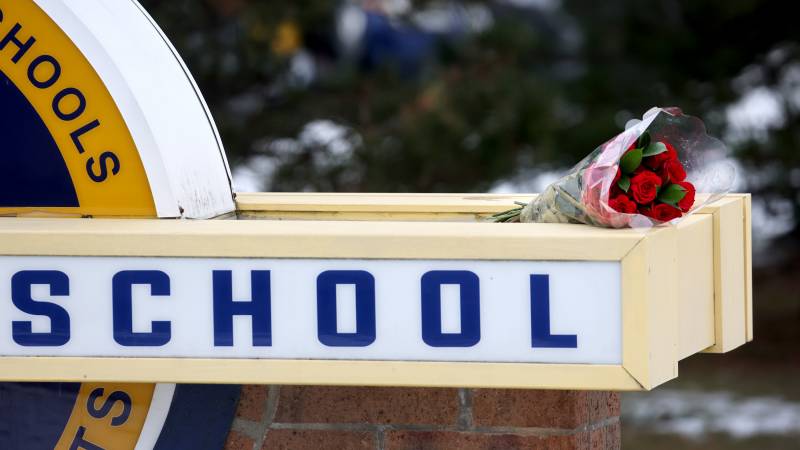Some students and county officials have credited the Oxford school's lockdown drills with saving lives and preventing an even worse outcome. The CEO of the ALICE Training Institute's parent company told nonprofit education site The 74 that the Oxford community "would have seen three to 10 X the number of deaths" without the company's guidance.
But while active shooter drills have become common practice across much of the country, some experts and parents worry they may do more harm than good, particularly if they involve simulation.
One of those critics is Dr. David Schonfeld, director of the National Center for School Crisis and Bereavement at Children's Hospital in Los Angeles. He spoke to NPR's Steve Inskeep about how high-intensity drills can harm students' mental health, and shared what alternatives he would propose instead.
Listen to the full conversation here or read on for details. And a note of warning, this story contains content some people may find upsetting.
Interview Highlights
Most schools have active shooter drills, but specifics vary
Most states require drills related to active shooter situations, Schonfeld says, but how they're carried out varies between individual schools and communities.
The first step is to discuss the drill and make sure students understand what they're supposed to do, he adds. The next phase typically consists of drills or exercises in which students are asked to take action to minimize risk within their classrooms, like locking doors, turning off lights, closing blinds and moving to a less visible area.
Some schools go a step further with what Schonfeld calls high-intensity drills, or those that involve an element of simulation like an actor pretending to be a shooter or sound effects mimicking bullets. Schonfeld says we don't have enough experience to know which particular types of preparation may help the most, but experts do know that high-intensity drills are inevitably going to be upsetting to children and even teens and adults.
High-intensity drills can cause emotional distress
Some schools carry out these drills without informing children — or sometimes staff — that they aren't real, which Schonfeld says can be very realistic and distressing.
He recalls instances of children thinking they might die and scribbling notes to their parents in an effort to say goodbye.
"There was one report of a child who actually wrote with a marker on her body so that when her body was found she would be able to let her parents know that she loved them," he adds.
Such drills can be upsetting for children of any age, Schonfeld explains, as peoples' understanding of risk and skills for coping with distress evolve as they get older. For example, he said a 7-year-old may be capable of understanding what the drill is meant to try to prevent but may be less able to cope with their feelings, while a 17-year-old may have a greater sense of vulnerability and fear.
There are ways to make live drills less potentially damaging
Schonfeld emphasizes that it's important for children to be reasonably prepared to take action if something tragic were to happen, with the goal of helping students learn how they should be moving safely in a crisis situation.
He believes less-intense live drills can help accomplish that. And that's not a totally new phenomenon for most schools, he notes.
"We do fire drills in schools, and those are live drills where children exit schools and quietly," Schonfeld says. "There's no attempt at smoke to make it feel like a fire, there's no necessity to have people screaming in the hallways."
Preparations should involve more than just drills
More broadly, Schonfeld says school shootings are a complicated problem with more than one solution.
"We can't be putting all of our resources in just preparing kids for active shooters," he says. "What we need to do is put a lot of resources, perhaps much more resources, into preventing them in the first place."
That would entail more support for behavioral health in schools, and investment in social-emotional development in children more generally. Schonfeld says that could look like training students to be able to better identify distress among their peers and get them help.
"We have to invest our resources in prevention as well as in what to do when prevention isn't successful," he adds.
The digital version of this story originally appeared in the Morning Edition live blog.
Copyright 2021 NPR. To see more, visit https://www.npr.org.
9(MDAxOTAwOTE4MDEyMTkxMDAzNjczZDljZA004))



9(MDAxOTAwOTE4MDEyMTkxMDAzNjczZDljZA004))